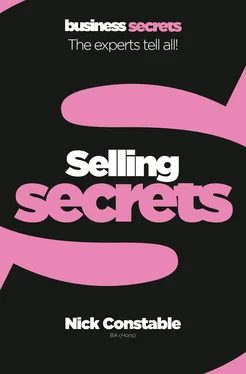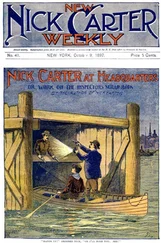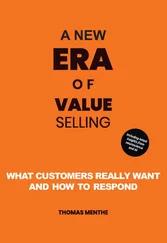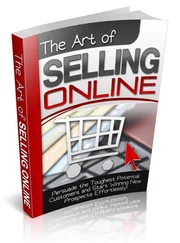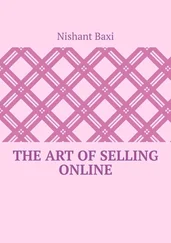Nick Constable - Selling
Здесь есть возможность читать онлайн «Nick Constable - Selling» — ознакомительный отрывок электронной книги совершенно бесплатно, а после прочтения отрывка купить полную версию. В некоторых случаях можно слушать аудио, скачать через торрент в формате fb2 и присутствует краткое содержание. Жанр: unrecognised, на английском языке. Описание произведения, (предисловие) а так же отзывы посетителей доступны на портале библиотеки ЛибКат.
- Название:Selling
- Автор:
- Жанр:
- Год:неизвестен
- ISBN:нет данных
- Рейтинг книги:5 / 5. Голосов: 1
-
Избранное:Добавить в избранное
- Отзывы:
-
Ваша оценка:
- 100
- 1
- 2
- 3
- 4
- 5
Selling: краткое содержание, описание и аннотация
Предлагаем к чтению аннотацию, описание, краткое содержание или предисловие (зависит от того, что написал сам автор книги «Selling»). Если вы не нашли необходимую информацию о книге — напишите в комментариях, мы постараемся отыскать её.
Selling — читать онлайн ознакомительный отрывок
Ниже представлен текст книги, разбитый по страницам. Система сохранения места последней прочитанной страницы, позволяет с удобством читать онлайн бесплатно книгу «Selling», без необходимости каждый раз заново искать на чём Вы остановились. Поставьте закладку, и сможете в любой момент перейти на страницу, на которой закончили чтение.
Интервал:
Закладка:
Let’s consider some of the aspects of value in a business context:
Needs. We can define Needs as being those drivers of positive change that will deliver the most value to the customer, because these are things the customer must have in order to achieve the improvement they seek. If we can understand how much the customer needs that improvement, we can work out the true value of helping them achieve it.
Wants. Some drivers of positive change will be ‘nice to have’ but not completely necessary for the customer to achieve the improvement they seek. We can call these things Wants. The customer will attach less value to these things. Make sure you are not selling to Wants alone.
“The wheel that squeaks the loudest is the one that gets the grease.”
Josh Billings, American humourist
one minute wonderIf you’re having difficulty trying to work out what’s going to be valuable to your target customer, focus on your customer’s customer. Find out what your customer needs or wants to improve in order to deliver value to its own customers. This will give you some clues about what change might represent value to them.
Creating value. As we’ll see later, our job as salespeople is to uncover Needs and Wants, and then to understand how important satisfying them will be. Great salespeople know how to connect what they are selling to the impact, or value, it will create.
Problems, pain and opportunity. It’s highly likely that a positive change is needed or wanted because the customer currently has some kind of problem or difficulty. It’s helpful to think about these problems as business ‘pain’ from which the customer seeks some relief. Depending on how painful the problems are, the value of solving them will increase, and our opportunity to provide a solution will develop.
Three types of value. There are three basic types of value: Financial value is defined in money terms, Personal value relates to the buyer’s own personal agenda or interests, and Business value relates to more general or strategic business aims, not necessarily quantifiable in money terms.
The customer needs to see that the value of your product or service outweighs its price.
1.3 Know the selling cycle
Making a sale can be a long and complex process, involving many different activities. Each of these activities belongs to a phase or stage in the ‘selling cycle’, and it’s important to keep track of what stage you are at with each customer.
Although they might not take weeks or even hours, but just minutes, even short, quick sales will still follow this cycle.
1 Suspects.These are brand new leads or opportunities which you have identified but not yet contacted. You suspect they may fit your profile of a potential customer.
2 Prospects.These are potential customers with which you have made contact, perhaps by telephone, and established a basis for further discussion, because there is a Need or Want. By this stage, you have discovered a problem that you can help them with.
3 Opportunities.At this stage you will be working with the customer to uncover the value to them of solving their problems. You will be building your relationship and finding out more about their Needs and Wants.
one minute wonderDon’t imagine that just because a potential customer calls you and asks you how much your product or service costs, that you are already miraculously at the Negotiating stage! Often, this is just an expression of mild interest and means you are really only at the Suspect stage with them.
4 Proposing.You will have reached the stage with these customers at which you have enough information and a good enough relationship to be able to put forward your proposal: this is the part of the process where you have the chance to tell the customer about your product and why it’s the right choice for them.
5 Negotiating.Only when the customer has accepted in principle the proposal you have made will they begin to want to agree the terms on which they may buy. This is the Negotiating stage.
6 Closing.Closing is the stage of the Selling Cycle at which you seek firm commitment from the customer to buy.
After Closing, the work hasn’t finished, because you will need to think about how you can repeat the cycle and find more business with your customer. That second and third sale ought to become easier too, because the customer now knows what you can do for them!
Use the Selling Cycle to identify your progress with potential customers.
1.4 Build trust and respect
One of my first ever customers told me that he had never bought anything from someone he didn’t like. I have seen the truth in this many times over. You need to build a customer’s trust and respect.
The way you treat your customer will tell them whether you’re someone they want to do business with. Here are five important things to consider throughout the selling process:
We buy from people we like. You sometimes have to make an effort to get onto the same wavelength as your customer and try to create some rapport. It doesn’t mean caving in to their every demand, but developing your ability to be sensitive to their personality.
case studyRecently, I was discussing sales training with a sales manager at a large software company. I told her honestly that sending all her people on a training course might not be the best way of improving sales results. In fact, I went further, and told her I did not think training courses on their own always worked. It’s the opposite of what she expected me to say, but I had started to build her trust in me with a bit of honesty. Of course, this had the benefit of allowing me to explain why several different training approaches, including coaching, might work better for her team.
“When dealing with people, remember you are not dealing with creatures of logic, but creatures of emotion”
Dale Carnegie, author of ‘How to Win Friends and Influence People’
Take an interest. The quickest way to build rapport is to stop talking about yourself, and start showing some genuine interest in the other person’s work, problems and personal interests. This is sometimes called ‘empathy’.
Do something surprising. Find something to say or do that will break through the natural cynicism they may have for salespeople, and show them you are different.
Be a ‘capable friend’. You will often find opportunities to bring something extra to the table, such as information, your expert advice or superior knowledge. Your customer will start to see more value in working with you.
Know when to trade. You won’t gain respect if you just do everything the customer demands. When you’re asked for something they value, ask for something reasonable in exchange.
Be open, honest and interested in your customer to build their trust.
1.5 You are the difference
One of the most powerful ways of winning against the competition is through the relationship that you build with your customers. You, and the approach you take, make the difference.
A good example of this is the way in which we all choose between suppliers of very similar commodities. There might be four hairdressers in the town where I live, but I always go back to the same one, because I enjoy the company of the chap who cuts my hair, even though he is a little more expensive than the others.
You are unique. Remember that your relationship with the customer is the one thing that the competition cannot copy. In a close, competitive contest, your behaviour and approach will make the difference.
Читать дальшеИнтервал:
Закладка:
Похожие книги на «Selling»
Представляем Вашему вниманию похожие книги на «Selling» списком для выбора. Мы отобрали схожую по названию и смыслу литературу в надежде предоставить читателям больше вариантов отыскать новые, интересные, ещё непрочитанные произведения.
Обсуждение, отзывы о книге «Selling» и просто собственные мнения читателей. Оставьте ваши комментарии, напишите, что Вы думаете о произведении, его смысле или главных героях. Укажите что конкретно понравилось, а что нет, и почему Вы так считаете.
